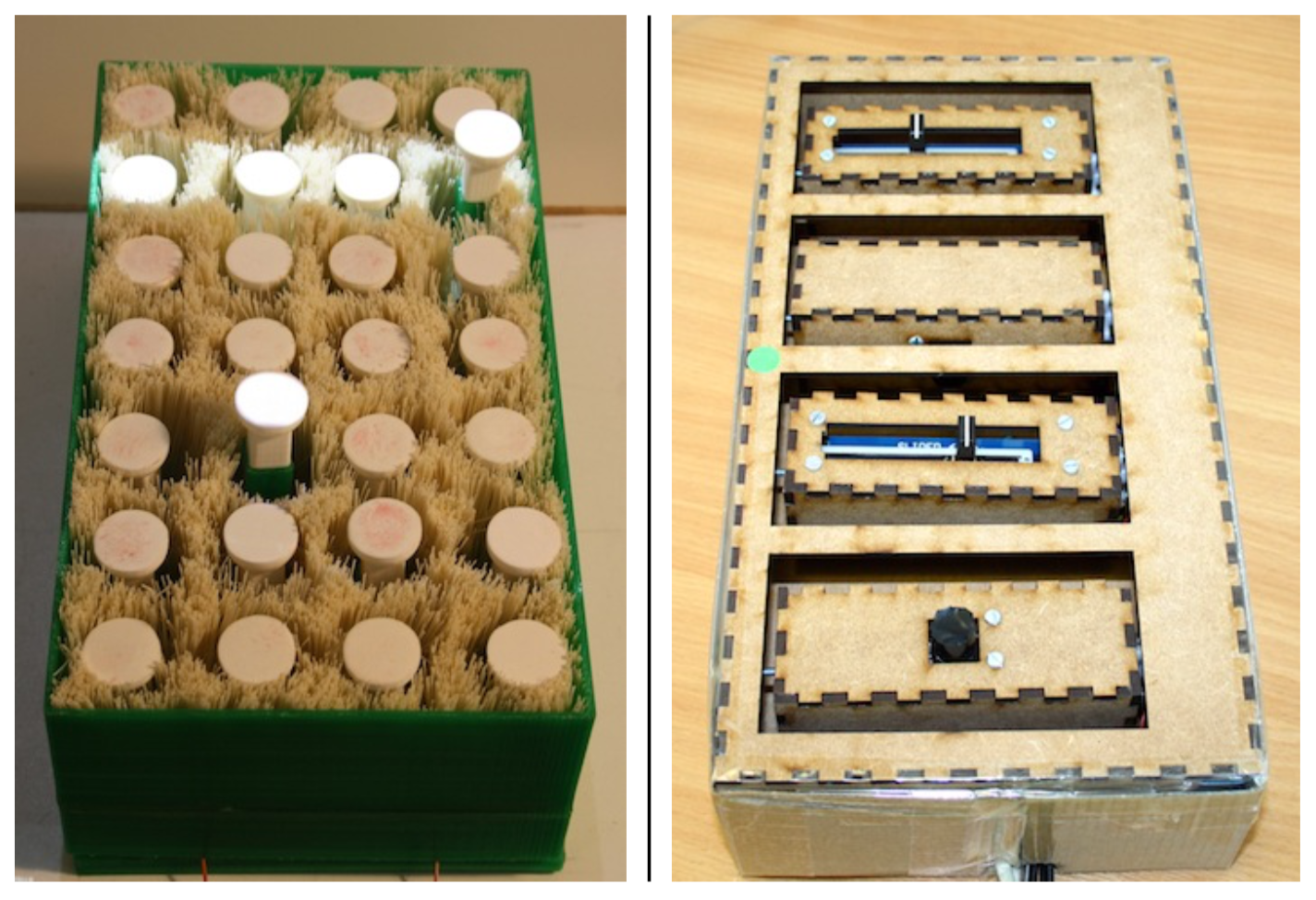Imagine you are watching television, when the entry phone rings. You get up to answer but decide to lower the volume of the programme you are watching so that you can hear the speaker on the entry phone clearly. You take your phone, press on the TV control application and, as you are crossing the corridor where your kids have left a load of toys on the floor, a button emerges from your screen allowing you to turn the volume down while watching out for the toys underfoot. This button emerging out of your screen is just like the dial on a hifi system. How weird does that sound to you? And yet, it could soon be a reality.
Céline Coutrix, Juan Rosso and Laurence Nigay, all members of the IIHM research team at the LIG (France), in conjunction with the FIT Lab at Swansea University (UK), have developed a futuristic proposal which they presented at the Conference for Human-Computer Interaction (CHI 2016) held on 7 May 2016. Their research is based on two prototypes, one made in Swansea and the other at Grenoble University's FabLabs (FabMSTIC and the Amiqual4Home Creativity Lab).
On the left: the low-resolution prototype designed by the FIT Lab team at Swansea University. The second row, highlighted in white, represents a moveable slider, where each button emerges in turn when the one next to it tilts to the side, producing a continuous sliding motion. The single emerging button can either be pressed or turned.
On the right: the high-resolution prototype designed by the IIHM team at the LIG using FabMSTIC and the Creativity Lab. The unit contains four rotate-able subsections, each capable of flipping between slider, flat surface or dial.
A video of the prototype has been made using Amiqual4Home resources, the best way of explaining the concept of dials and sliders emerging from the screen, and their potential uses.
Céline Coutrix uses her telephone, which has tactile buttons emerging from the screen, to control the connected objects in an apartment. In fact, these manipulations are simulated: Nicolas Bonnefond, the technician who manages the apartment, controls the devices remotely while the researcher uses imitation sliders and dials made at the FabLab. This demonstration illustrates the concept described in the paper, making it possible to imagine and understand how phones can be fitted with tactile buttons which emerge from the screen when needed, and shows how the interaction works. "It is easier to imagine human interaction with a touchscreen or a mouse," Céline Coutrix explained, "since these are well-known and widely-used technologies, whereas for an innovative technology, as in the case of emergeables, it is hard to imagine how interaction works if you only have physical prototypes. The simulation in the video is very important for our research."
The research as a whole received recognition by the scientific community at the CHI 2016 conference. Back from the future, the project will continue to evolve: a number of possibilities are being considered, including pixelising or miniaturising the buttons. The research team is planning to use the different FabLabs to develop and test prototypes of their interactive systems.

Amiqual4Home is an "Equipement d'excellence" (Equipex) managed by the Inria Grenoble Rhône-Alpes Research Centre and funded by the ANR (French National Research Agency) under its "Investment in the Future" programme. The platform makes a range of facilities available for developing the connected home.
